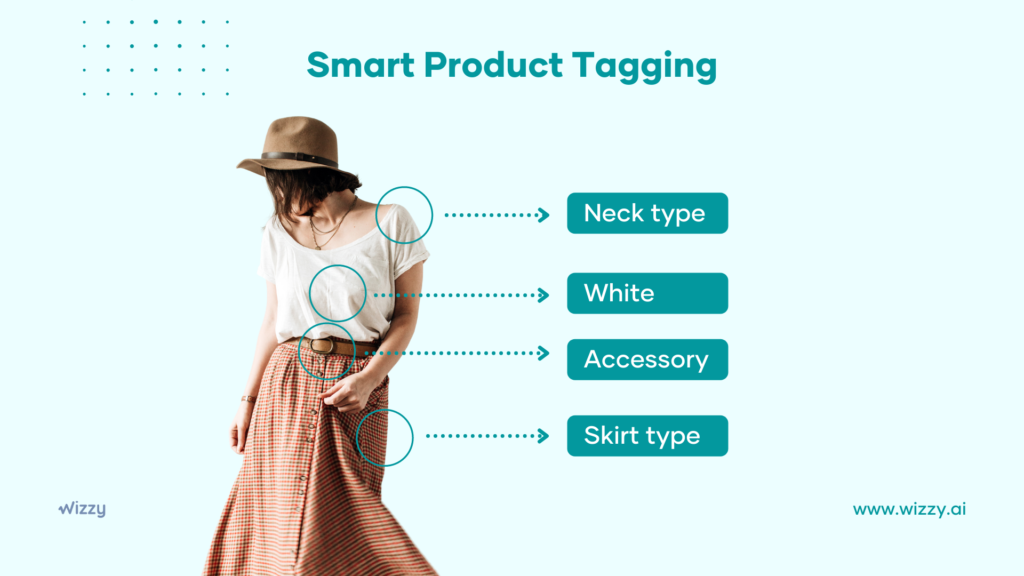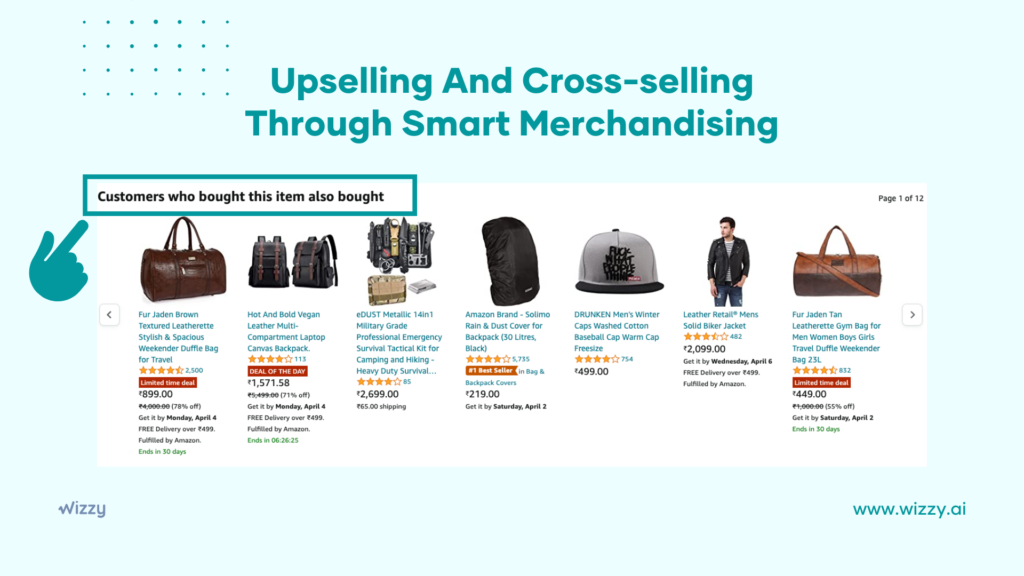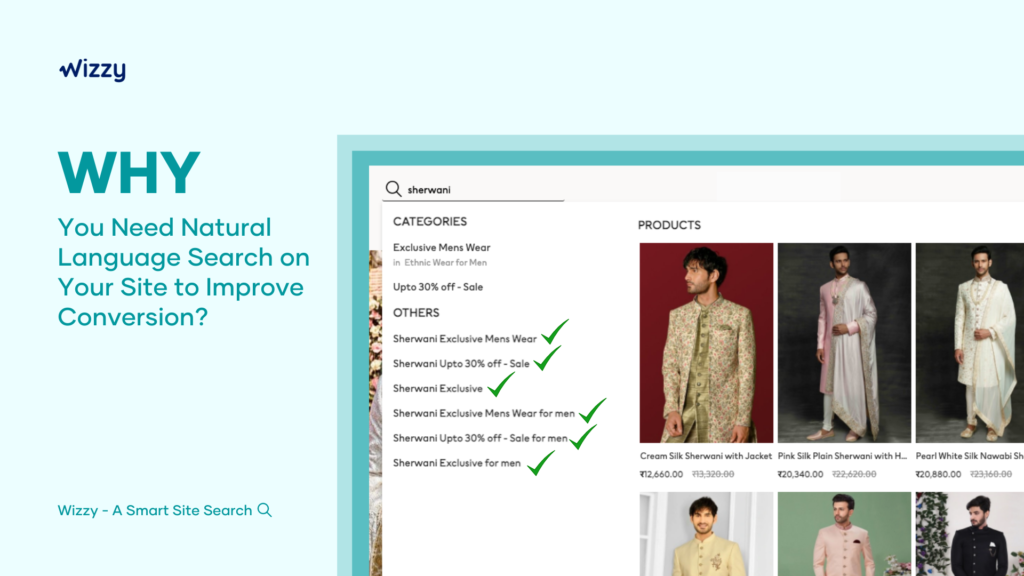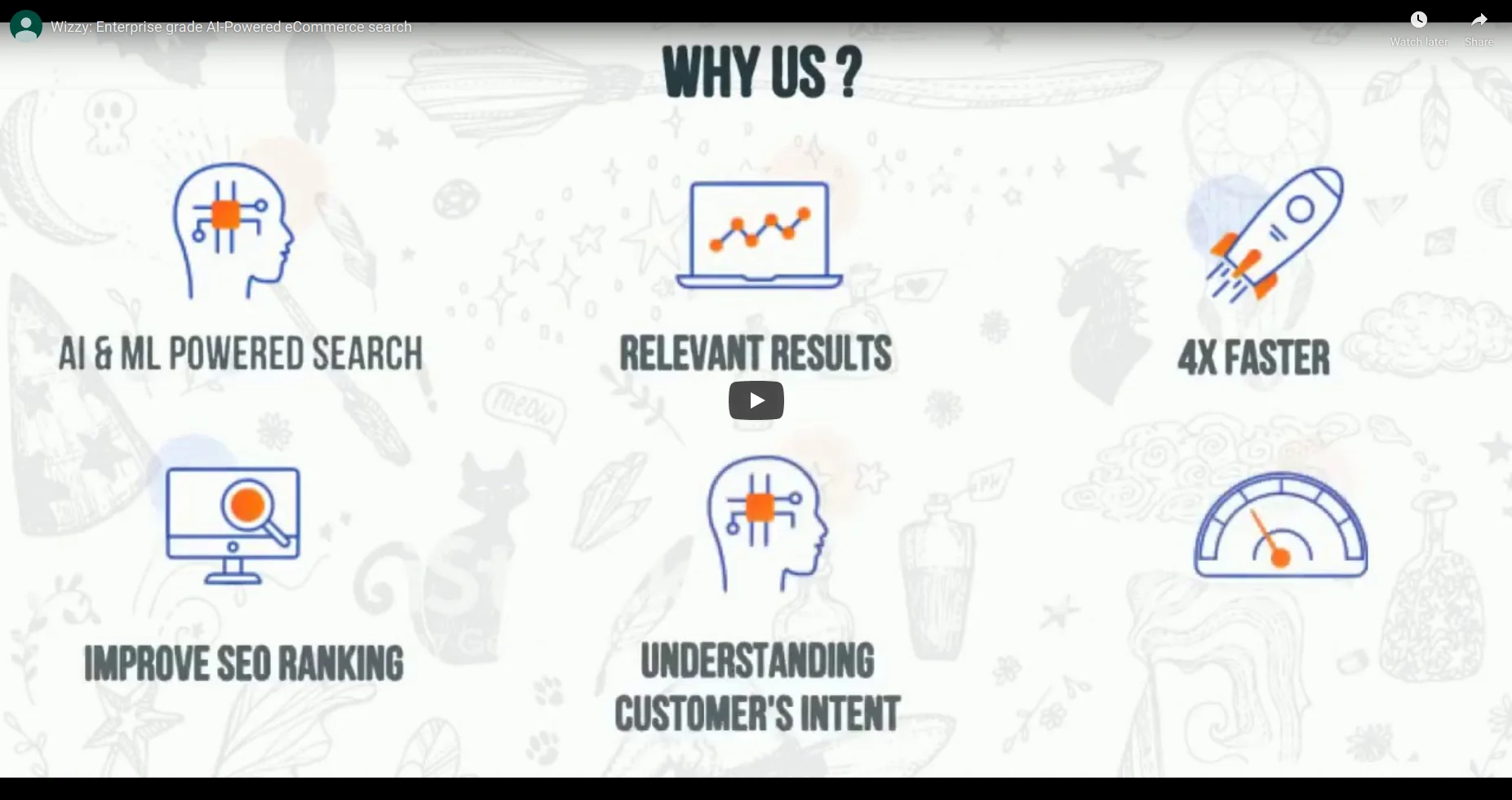The future of brick-and-mortar stores is grim. Shoppers are now steadily shifting towards e-commerce portals for the convenience and the variety they offer. But just like how any retail shop utilises physical re-configuration techniques to organise every last element in the most engaging order, e-commerce stores should equip themselves with smart merchandising.
This will simply eliminate all the background noises and distractions that can possibly drive your user away from your site by keeping them all the more engaged with what you offer.
Smart merchandising simply refers to the stream of data-driven techniques that will be helpful in the strategic placement of the products. The end goal of these adaptations is to keep the customers more engaged by showing them the right products at the right time to improve session times, increase cart values, and thereby drive conversion.
7 Key Components Of Smart Merchandising
Be it sending out emails to remind your site visitors about the shopping cart they abandoned, creative placement of Call-To-Action buttons, product placements & discovery, or AI-powered visual merchandising, all of this helps push the customers down the purchase funnel.
Smart merchandising tools will help you gather insightful data that will drive informed business decision-making. By understanding real-time user insights, browsing behaviours, customer intent, and past product search histories, you can deliver a personalised shopping experience that is uniquely curated according to particular user preferences.
1. AI-powered Product Tagging And Assortment

Wizzy - AI-powered Product Tagging And AssortmentSmart visual merchandising driven by the power of AI will simply enhance your site visitors’ shopping experience. The more you know about your visitors, the better you sell products to them.
2. Product Tagging
The process of assigning attributes to each product that will help in categorising, describing, or structuring its position within your inventory is called product tagging.
This will help in the collective representation of all your products and help in the metadata management of these including their colours, size, style, product utility, type, etc.
3. Product Assortment
Product assortment refers to the process of dealing with the entire catalogue of products and pushing selective ones forward for maximum visibility. You can sell more just by selecting and showcasing products that have the potential to sell at any point in time.
4. Design and UX Considerations
All the visual elements, design aspects, and UX features are going to have a direct impact on the shopping experience that your site visitors have on your site. You should make this entire journey frictionless.
Your visitors are most likely time-starved and it is on you to guide them towards the exact product they desire to buy quickly.

5. Intuitive Catalogue Management
69% of the shoppers visit a store or site in search of new products.
The freshness of your homepage is the one enticing factor that’s going to make your visitors stay on your site. Your visitors should not go lost among the thousands of options.
But, let’s say you sell a massive variety of product categories. With smart merchandising tools, you can group, rank, structure a hierarchy and showcase products, or even recommend them through controlled search results. Your entire site will be a recommendation platform in the order of the products that your customers most likely want and need.
Through proper metadata integration with every last item on your inventory, you’ll be able to manage your product spectrum easily and display them all the better. All your visitor data insights, sales reports, and AI-powered restructuring will help you create a better-informed inventory strategy.
6. Upselling and Cross-selling

Have you ever paid attention to Amazon’s ‘people also looked for’ or ‘you might also be interested in’ suggestions below the actual product page that you’re on?
This is called cross-selling where your real-time data insights are dissected to dynamically show you other additional products of different niches that might further catch your eye.
Remember the ‘commonly bought together’ tab on any product landing page on Amazon? The idea is to promote products that group together and go hand-in-hand. This is a strategic marketing technique that drives better cart values by giving shoppers a lot of relevant options.

7. Smart navigation with dynamic filtering
Your site navigation should be a map that directs your customers to the products they want to buy. The quicker and easier they land on your collection, the better will be their overall shopping journey.
Everything from your menu structure to search results filters should work in tandem to help shoppers discover products that would best suit their needs. You should also allow shoppers to sort and filter search query results through faceted navigation.
This kind of seamless product finding is even more feasible with smart merchandising through AI-powered tagging.
5 Effective Smart Merchandising Strategies For Your E-commerce Site
1. Hyper-personalisation
The future of any means of selling is going to be the art of personalisation. People love being noticed, understood, and known, especially when they’re not really sure about what they want. This is why hyper-personalisation matters.
By combining real-time visitor data with visual AI, you can engage your site visitors with personalised predictions and a listing of products. These smart product recommendations will help you sell more.
2. Relevant Recommendations
About 35% of what customers purchase on Amazon comes through their product recommendations. Not to forget the whopping 75% of what people watch on Netflix is also from their recommendations.
Through AI-powered product tagging, you can stay relevant to the market trends, hype the products that are trending, and create urgency with your personalised recommendations. This will improve the session times since you keep your customers occupied and immersed with all your enticing suggestions.
3. Visual Merchandising
Enticing your customers to stay on your website for longer periods will only happen if you give them a visually-pleasing product discovery and shopping experience. You have to catch their attention as quickly as possible and also retain their interest for longer periods as they surf through your site.
You thus need visual merchandising on all your pages to offer a crisp picturisation that will give your site visitors a look and feel of your product offering. Augmented Reality, Try-one, 360⁰ product imagery, demo videos can make a massive impact on shopping experiences and keeping your visitors on the site for long.
4. Showcasing Dynamic Collections And Thematic Galleries
Your entire site should be a reflection of a freshly curated product collection that will keep your site visitors on their toes. They need to keep coming back to you and find fresh inventory each time around.
You should also be doing a lot of thematic trials and errors before identifying what works best for you. For any site visitor who is just looking through, your thematic product display might be a source of inspiration. This will be a great way to drive sales by simply putting your products out there with an associated context. You can launch seasonal sales, products grouped to suit occasions or personal styles, etc. The possibilities are endless.
5. Customer Behaviour Understanding
AI-powered visual merchandising can help you grab visitor attention, but having insights on their interaction with the product search, how much time they spend on your site, how many products they add to the cart, where all they click, etc. can help you serve your site visitors better and convert more visitors into customers.
With smart merchandising, you can also make way for real-time product optimisations by accounting for various user behaviour metrics in the equation. You can thus cater to them specifically by understanding their demographics completely. All this data will help you narrow down what your visitors like best and further push the same to future site visitors.
Embracing Smart Merchandising: Boost Your E-commerce Revenue
The hyper-personalised shopping experience is going to be the future of e-commerce. If you’re looking to run a sustainable e-commerce portal, you must utilise all data points to your advantage and curate a functional store that is equipped with smart merchandising tools.
Empathising with your customers’ wants is what will put your store ahead of your competitors. Wizzy might just be the one solution that can make your entire e-commerce operations level up.
Why Wizzy Is Your Best E-Commerce Site Search Technology Choice
At its core, search connects people with the products they want.
In e-commerce, this means connecting shoppers with the products they’re searching for and making their shopping journeys more enjoyable, natural and fulfilling.
The problem is that many site search tools don’t provide a great user experience. They fail to understand the search intent and return irrelevant results, leading to lost sales and frustrated users.
A great site search tool can do much more than provide a simple list of search results or autocomplete suggestions. It should give your users a seamless shopping experience by automatically understanding their intent and desires, regardless of how they phrase their queries.
And this is exactly what Wizzy offers.
● Wizzy comes with built-in NLU, which is better than the usual keyword matching — because it understands the meaning of your shopper’s search query, regardless of how they phrase it. This way, it delivers relevant results even when shoppers use phrases or typos.
● Wizzy displays visual search results, which means the shoppers can find the right product faster and easier.
● Wizzy interprets the search intent and displays relevant results, no matter if the user types in queries with spelling or grammatical errors.
Want to take a look at how Wizzy works in real-time? Book a free demo now.

Further Reading
- Understand How Amazon Search Bar Works
- Understand How Google Shopping Search Bar Works
- Understand How Advanced Site Search Can Increase Your Store Sales
- Understand The 10 Ways to Improve Your E-commerce Site’s Search and Sales in 2022
- Understand Why You Need Natural Language Search on Your Site to Improve Conversion



